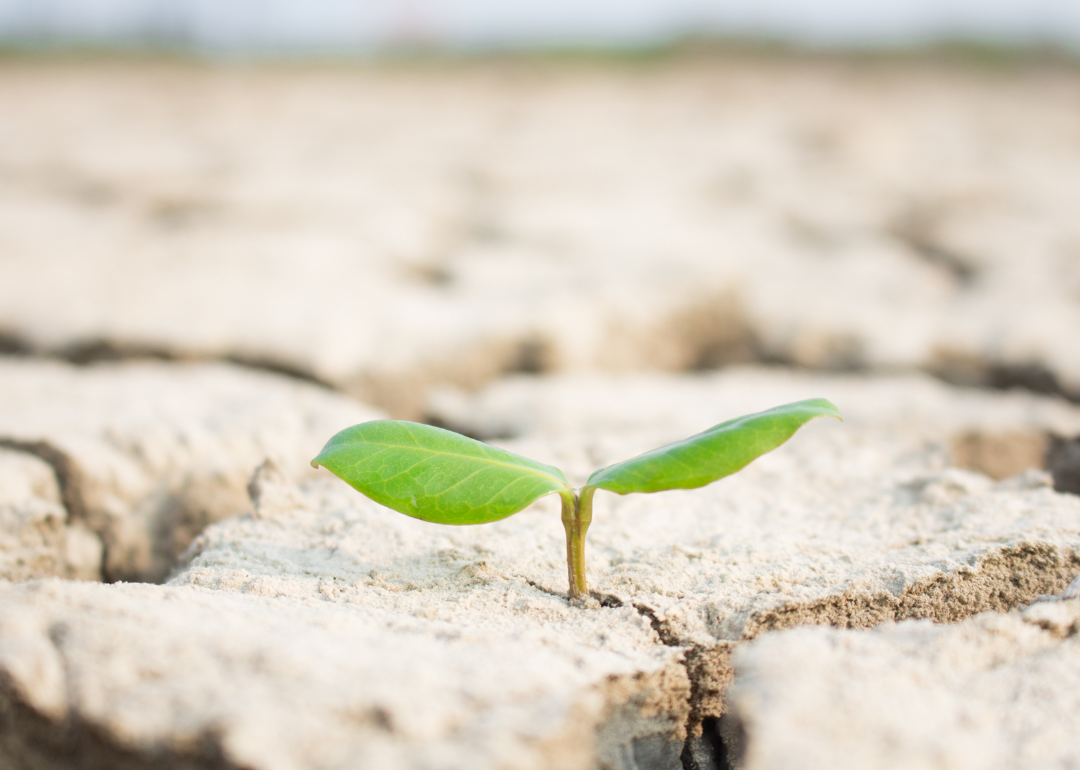
See how much of North Dakota is experiencing drought conditions
See how much of North Dakota is experiencing drought conditions
Nearly one-third of Americans experienced a weather disaster this summer, giving them first-hand experience into a future of extreme hurricanes, wildfires, storms, and floods caused by global climate change. Data from the National Oceanic and Atmospheric Administration (NOAA) and NASA both show rapid warming in the 21st century, with the past decade being the hottest on record. According to The Washington Post, the cost of responding to these weather disasters is more than $81 billion per year.
Among those disasters were several significant, costly, and deadly droughts. Droughts are among the most destructive forces in nature—only hurricanes are more economically damaging to the United States. Destroyed crops ripple through the economy, with animal feed prices increasing, which can indirectly raise the price of meats and animal products like milk and cheese. The annual losses due to drought are near $9 billion per year. Droughts also contribute to wildfires, increasing the likelihood of ignition and making them more extreme when they do happen.
Stacker ranked each state and Washington D.C., based on the average percentage of the state land that experienced drought conditions in the 20-year period from 2000 to March 2021, using data from the U.S. Drought Monitor (USDM). The USDM categories drought conditions using a five point scale ranging from "abnormally dry," indicating some short-term crop dryness or a lingering water deficit, to "exceptional drought," a serious condition involving a water emergency that leads to widespread crop/pasture losses.
North Dakota by the numbers
- Share of state experiencing drought conditions (20-year average): 30,897 sq. mi. (43.7% of land area); 271,556 people (40.4% of population)
--- Moderate drought: 13,823 sq. mi. (19.5% of land area); 108,753 people (16.2% of population)
--- Severe drought: 4,970 sq. mi. (7.0% of land area); 35,710 people (5.3% of population)
--- Extreme drought: 784 sq. mi. (1.1% of land area); 5,272 people (0.8% of population)
--- Exceptional drought: 28 sq. mi.; 219 people
In the 21st century, drought—or at least abnormally dry conditions—has been the rule, not the exception in North Dakota. By the summer of 2019, the northern part of the state was in its third year of a drought that ruined wide sections of grasslands that ranchers rely on to graze cattle. Today, it's no longer relegated to the North, as 100% of North Dakota is suffering from abnormally dry conditions and moderate drought, 80% is experiencing severe drought, and 16.9% is dealing with extreme drought.
The entire national list, including descriptions of the conditions that led to or prevented drought in each state and the events leading up to the state's change in drought status, can be found here. Continue reading to learn which states experience the worst droughts.
Most drought-ridden states
#1. Arizona
- Share of state experiencing drought conditions (20-year average): 87,702 sq. mi. (76.9% of land area); 4,867,057 people (76.1% of population)
#2. Nevada
- Share of state experiencing drought conditions (20-year average): 78,717 sq. mi. (71.2% of land area); 1,942,485 people (71.9% of population)
#3. New Mexico
- Share of state experiencing drought conditions (20-year average): 84,806 sq. mi. (69.8% of land area); 1,455,107 people (70.7% of population)
Least drought-ridden states
#1. Ohio
- Share of state experiencing drought conditions (20-year average): 6,631 sq. mi. (16.1% of land area); 1,815,050 people (15.7% of population)
#2. Alaska
- Share of state experiencing drought conditions (20-year average): 95,420 sq. mi. (16.4% of land area); 159,582 people (23.2% of population)
#3. New York
- Share of state experiencing drought conditions (20-year average): 8,721 sq. mi. (18.0% of land area); 4,174,482 people (21.5% of population)



